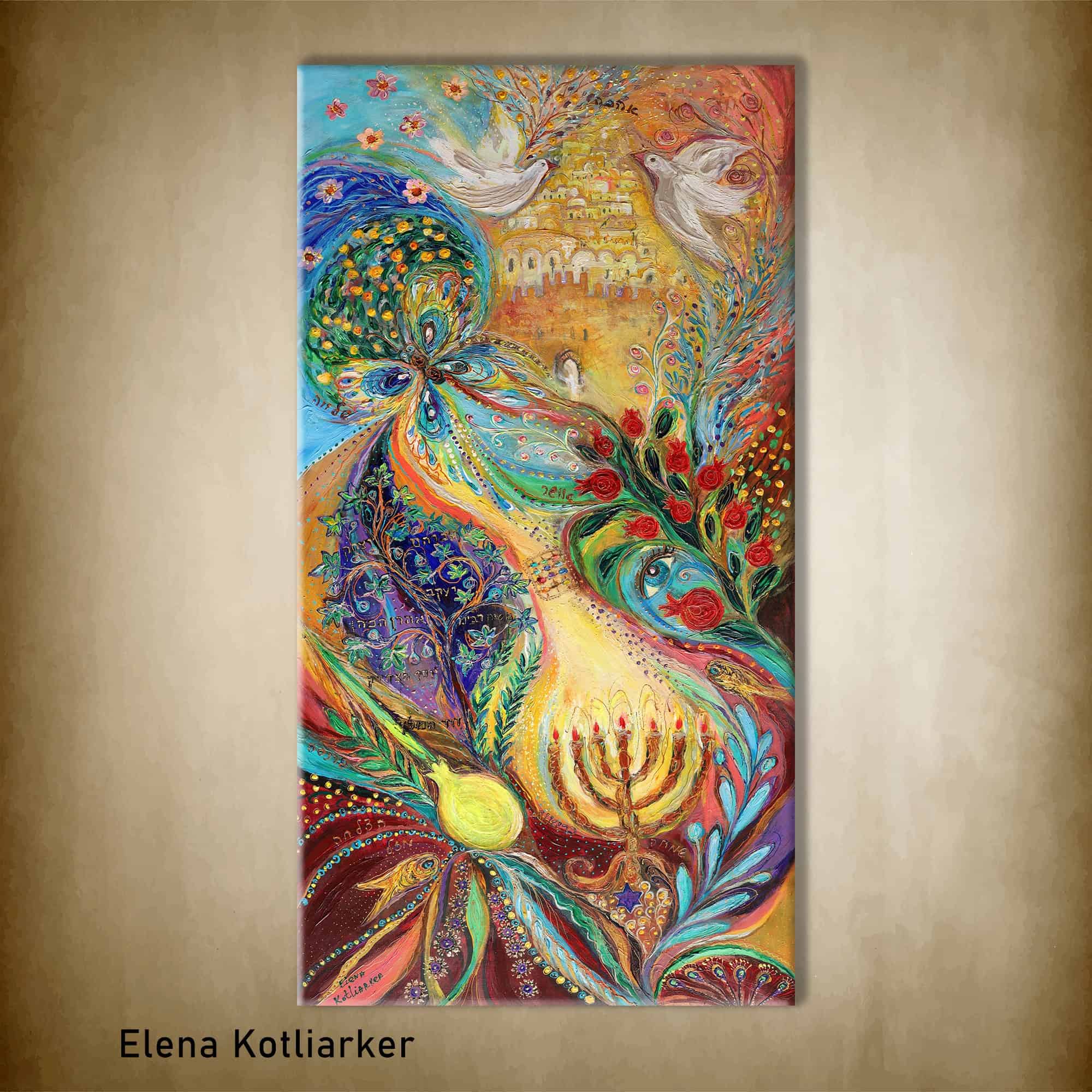As an artist who has created a four painting composition titled “Jewish Holidays,” I am excited to share with you one of the paintings in this collection dedicated to the Jewish holiday of Sukkot. This particular painting is a visual representation of the rich symbolism and meaning behind Sukkot, combining historical, agricultural, and spiritual elements to create a cohesive representation of the holiday.
The walls of Jerusalem
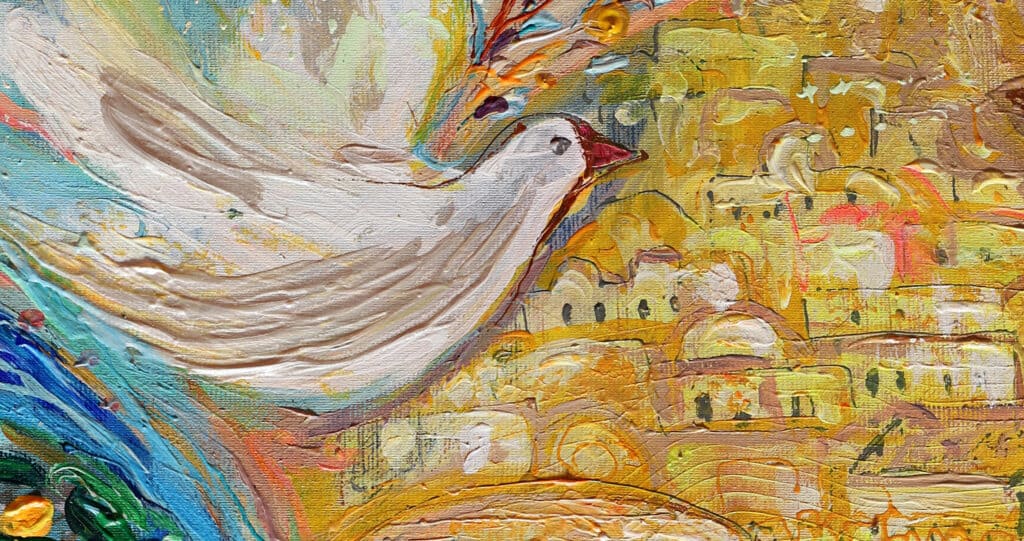
The painting depicts the walls of Jerusalem, a gate, two white doves, orange and olive trees, a branch with red pomegranates and Etrog fruit, and a menorah on the first plan. Each element in the painting is a deliberate choice and holds significance in relation to the holiday of Sukkot.
The walls of Jerusalem are a direct reference to the city’s sacredness and its historical and religious significance to the Jewish people. During Sukkot, Jews all around the world commemorate the biblical story of the Israelites wandering in the desert for 40 years before reaching the promised land, including their stop at Mount Sinai where they received the Torah.
The Sukkah
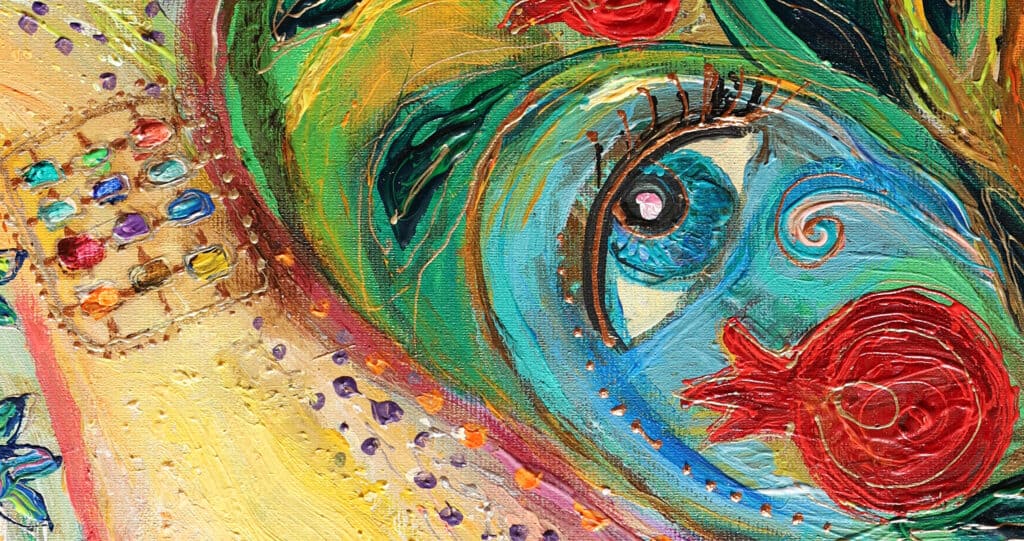
The gate in the center of the painting represents the entrance to the Sukkah, a temporary structure built during the holiday where families gather to eat, drink, and celebrate. The Sukkah is a reminder of the time when the Israelites lived in temporary shelters in the desert, and it serves as a symbol of the fragility of life and the importance of community.
The agricultural significance of Sukkot
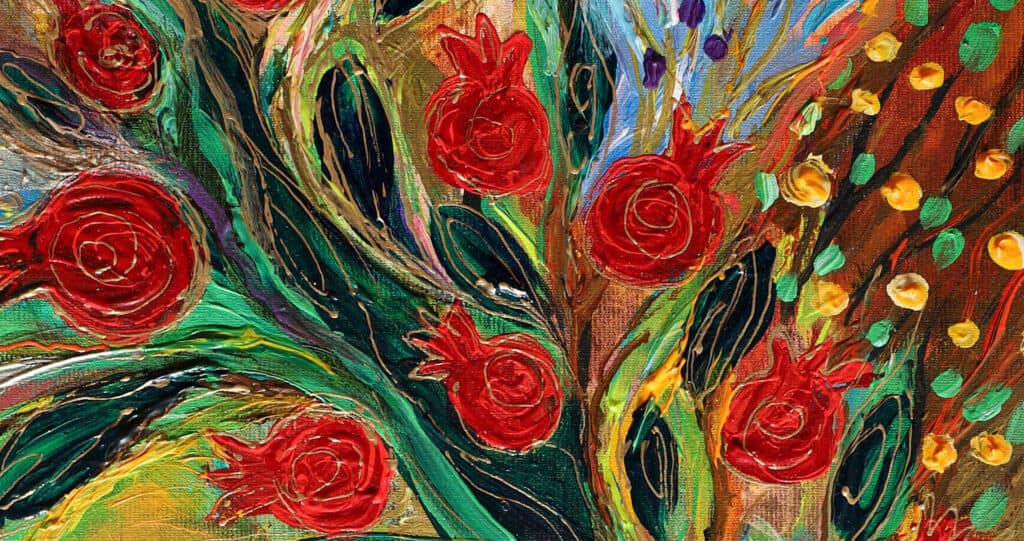
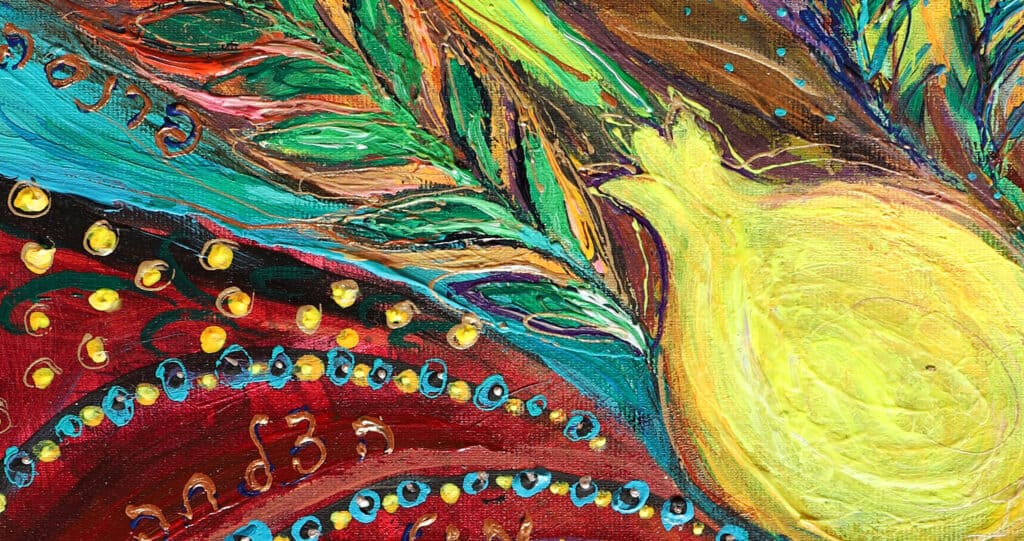
The two white doves represent peace and are a reference to the biblical story of Noah’s ark, which is read during Sukkot. The doves’ white color symbolizes purity and innocence.
The orange and olive trees in the painting represent the agricultural significance of Sukkot. It is a time when Jews celebrate the harvest season and give thanks for the abundance of food that nature has provided. The orange tree represents the sweet fruits of the harvest, and the olive tree represents the oil used for lighting the menorah in the Sukkah.
The branch with the red pomegranates and Etrog fruit is a direct reference to the traditional “four species” used during Sukkot. The pomegranate is also a symbol of fertility and abundance and is often associated with the Jewish people.
The spiritual significance of Sukkot
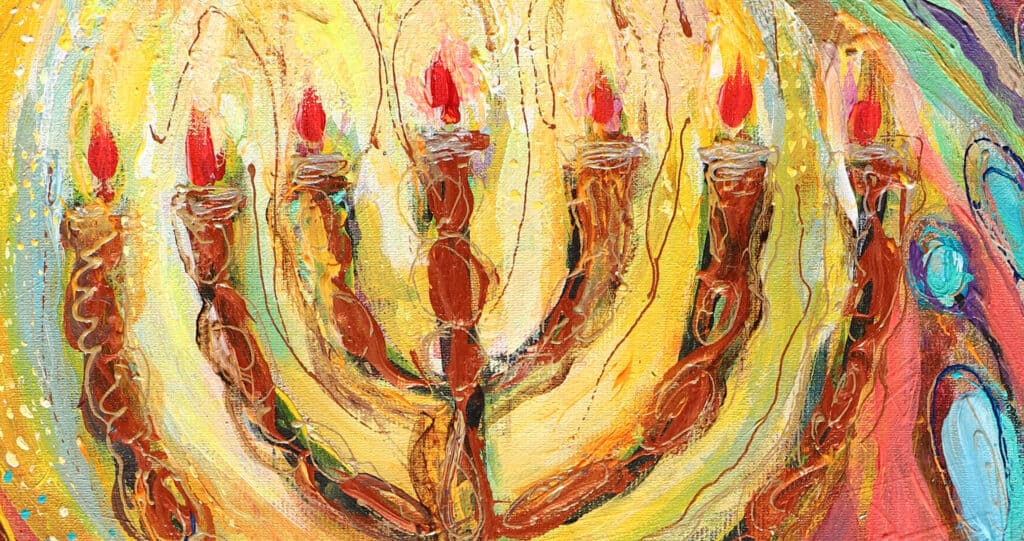
Finally, the menorah on the first plan represents the spiritual significance of Sukkot. The menorah is a seven-branched candelabrum that symbolizes the light of God. During Sukkot, Jews light the menorah in the Sukkah, which represents the presence of God in their temporary dwellings.
In conclusion, this painting is one part of a four painting composition titled “Jewish Holidays,” and it represents the holiday of Sukkot. It is a visual representation of the rich symbolism and meaning behind the holiday, combining historical, agricultural, and spiritual elements to create a cohesive representation of Sukkot. I hope that this description has given you a deeper understanding and appreciation of my artwork and the holiday that it represents.

